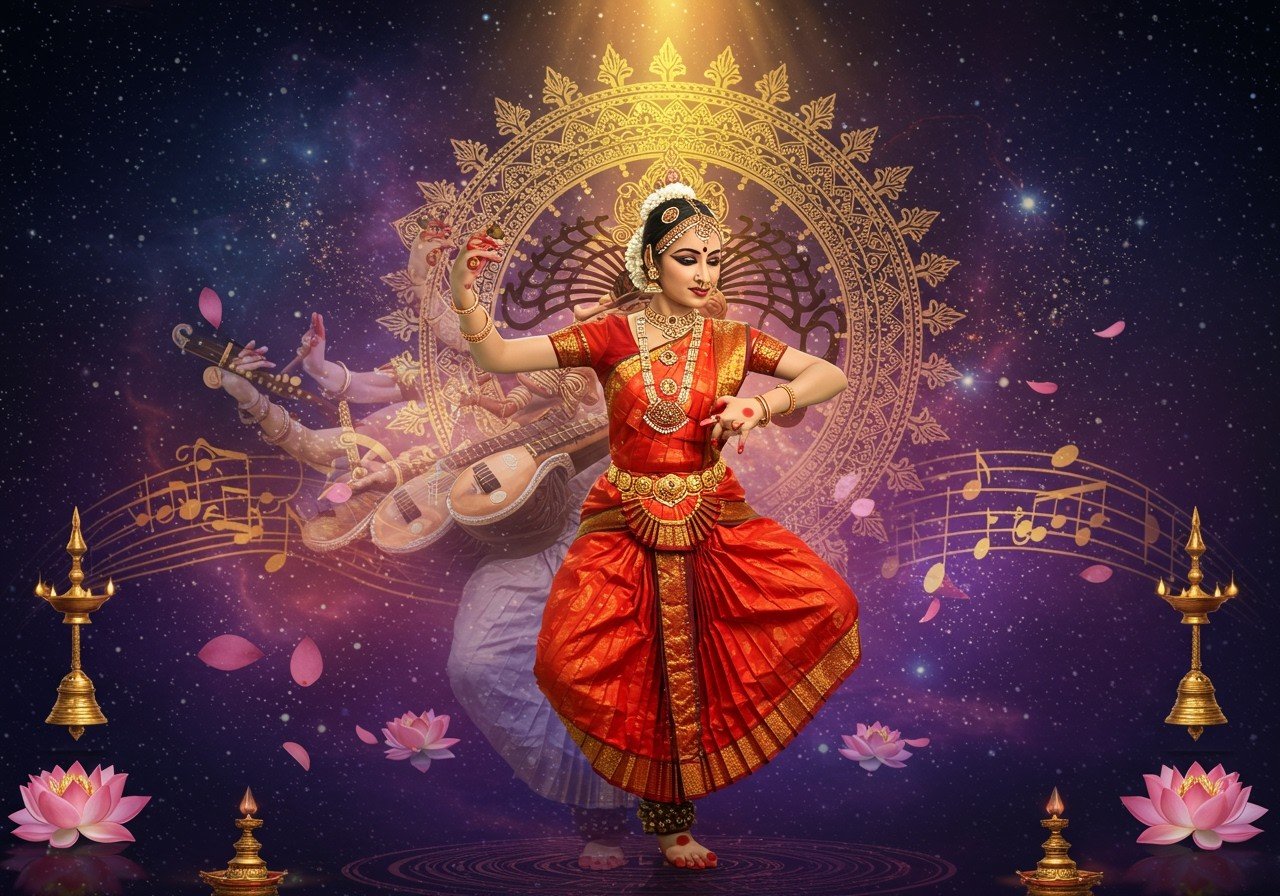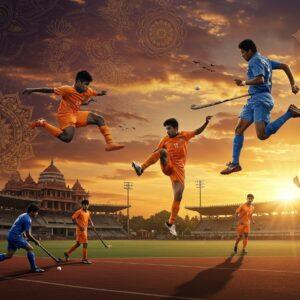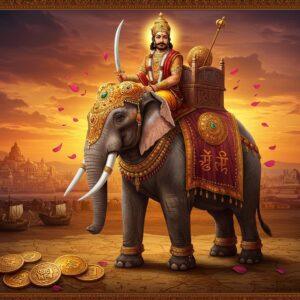
Hindu music and dance are deeply intertwined with India’s spiritual and cultural fabric. These art forms, evolving over millennia, hold a significant place in our rituals, celebrations, and expressions of devotion. From ancient Vedic chants to today’s vibrant online performances, Hindu music and dance continue to resonate deeply within contemporary Indian society.
Tracing the Melodies: Historical Roots of Hindu Music
The journey of Hindu music begins in the Vedic period, around 1500 BCE. The Samaveda, one of the four Vedas, holds immense importance for Indian classical music. Music played a crucial role in Vedic rituals, invoking deities and accompanying yajnas (sacrificial rites).
Ragas and talas, the fundamental building blocks of Indian classical music, are imbued with spiritual meaning. Ancient texts like the Natyashastra, attributed to Bharata Muni, formalized these traditions, laying the groundwork for the rich musical heritage we cherish today. The Bhakti movement, a period of profound spiritual awakening in medieval India, further enriched Hindu music, emphasizing devotion and a personal connection with the divine through song. It gave rise to a plethora of devotional compositions that continue to inspire and uplift us.
Grace in Motion: Evolution of Hindu Dance Forms
Hindu dance forms, too, have a rich history, evolving from temple rituals to the classical styles we know and love today. Bharatanatyam, hailing from Tamil Nadu, emerged from the sacred dance traditions of devadasis (temple dancers), offering a powerful medium for spiritual expression. Kathak, rooted in north India, narrates stories through intricate rhythmic footwork and expressive gestures, captivating audiences with its dynamic storytelling. Odissi, from Odisha, is closely linked to the rituals of the Jagannath temple, reflecting the region’s deep-rooted spirituality.
Manipuri dance, with its graceful movements and flowing costumes, portrays themes of Vaishnavism, bringing the stories of Lord Krishna to life. Kuchipudi, from Andhra Pradesh, blends fast rhythms with captivating storytelling. These classical dances have gracefully adapted to modern times while preserving their inherent spiritual essence. They continue to inspire awe and devotion, connecting us to our rich cultural heritage. You can discover more about the rich history of Indian music and dance traditions in our blog post Maihar Gharana: Exploring a Musical Tradition and Spiritual Heritage.
The Spiritual Heart of Music and Dance
Hindu music and dance hold deep spiritual significance, playing an integral role in religious worship and meditation. The concept of ‘Nada Brahma’ (the universe is sound) underscores the divine nature of music, recognizing it as a fundamental force of creation. Specific ragas evoke specific emotions and are believed to create a connection with the divine during rituals. Dance in temple rituals often symbolizes offerings to the deities, representing cosmic elements and stories from our scriptures.
Performers often enter a meditative state during these performances, experiencing a sense of unity with the divine. Music and dance serve as potent forms of ‘bhakti’ (devotion), facilitating a profound spiritual journey. Festivals like the Chennai Music Season showcase the rich tapestry of our musical heritage, celebrating spirituality and artistic excellence.
Resonating in the Modern World: Representation and Influence
Hindu music and dance thrive in contemporary media, influencing global culture in profound ways. Platforms like YouTube have brought Hindu music videos to a global audience, allowing people from all walks of life to experience the beauty and spirituality of these art forms. Indian classical music has even influenced Western genres, leading to exciting cross-cultural collaborations. Fusion music, blending traditional elements with modern sounds, appeals to younger audiences, ensuring the continuity of these traditions.
Bollywood films have played a significant role in popularizing classical dance forms through captivating movies and music videos, showcasing the grace and artistry of these traditions. Social media platforms provide a space for emerging artists to share their talent and connect with a wider audience, while also serving as valuable tools for preserving traditional art forms. Online platforms offer accessible learning opportunities, making it easier than ever for anyone interested in exploring Hindu music and dance to begin their journey. Poojn.in offers a curated selection of products relevant to Hindu music and dance. You might find our Clay Diyas and Dhotis suitable for various ceremonies and rituals. For a comprehensive guide on your pilgrimage, refer to our Maihar Trip Planner.
Embracing the Timeless Harmony
Hindu music and dance are not merely art forms; they are living embodiments of India’s spiritual and cultural heritage. Whether you are moved by a soulful raga or captivated by the graceful movements of a dancer, you are participating in a tradition that has been cherished for centuries. These vibrant expressions of devotion and storytelling bring joy, peace, and a deeper connection to our roots, serving as bridges between the past and the present.
By embracing these traditions, we honor our heritage and discover new ways to express our spirituality in the modern world. As you explore these beautiful art forms, whether through a live performance or an online video, remember that you are part of a timeless harmony that echoes the divine. If you are looking for authentic puja items for your spiritual practices, Poojn.in offers a wide range, including Kumkum and Roli, Hawan Samagri, and much more. We strive to make your spiritual journey more convenient and fulfilling.


